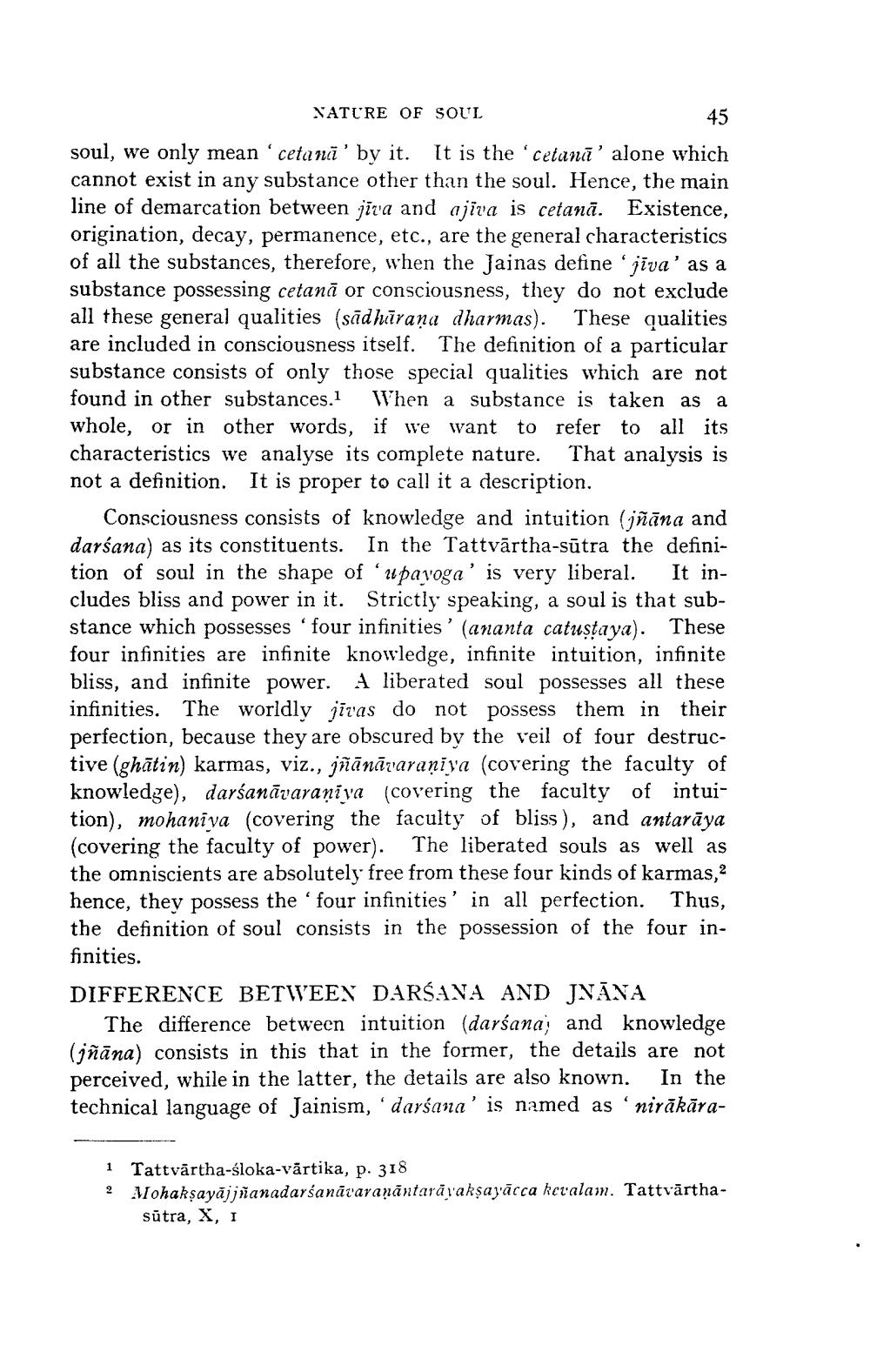________________
NATURE OF SOUL
45
soul, we only mean 'cetancē' by it. It is the 'cetanī' alone which cannot exist in any substance other than the soul. Hence, the main line of demarcation between jita and ajiva is cetanā. Existence, origination, decay, permanence, etc., are the general characteristics of all the substances, therefore, when the Jainas define 'jīva' as a substance possessing cetanā or consciousness, they do not exclude all these general qualities (sādhirana dharmas). These qualities are included in consciousness itself. The definition of a particular substance consists of only those special qualities which are not found in other substances. When a substance is taken as a whole, or in other words, if we want to refer to all its characteristics we analyse its complete nature. That analysis is not a definition. It is proper to call it a description.
Consciousness consists of knowledge and intuition (jñāna and darśana) as its constituents. In the Tattvārtha-sūtra the definition of soul in the shape of 'upavoga' is very liberal. It includes bliss and power in it. Strictly speaking, a soul is that substance which possesses 'four infinities' (ananta catustaya). These four infinities are infinite knowledge, infinite intuition, infinite bliss, and infinite power. A liberated soul possesses all these infinities. The worldly jīvas do not possess them in their perfection, because they are obscured by the veil of four destructive (ghātin) karmas, viz., jñānāraraṇīya (covering the faculty of knowledge), darśanīvaraṇīya (covering the faculty of intuition), mohaniya (covering the faculty of bliss), and antarāya (covering the faculty of power). The liberated souls as well as the omniscients are absolutely free from these four kinds of karmas, 2 hence, they possess the 'four infinities' in all perfection. Thus, the definition of soul consists in the possession of the four infinities. DIFFERENCE BETWEEX DARŠANA AND JNĀNA
The difference between intuition (darśana; and knowledge (jñāna) consists in this that in the former, the details are not perceived, while in the latter, the details are also known. In the technical language of Jainism, darśana' is named as 'nirākāra
1 Tattvārtha-śloka-vārtika, p. 318 2 Mohakşayājjñanadarśanāvaraṇāntarā vakşayācca ketalam. Tattvārtha
sūtra, X, I




